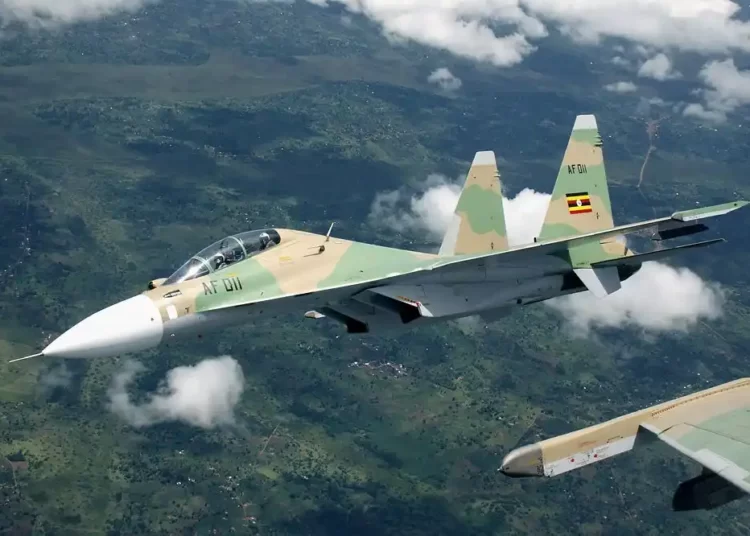The government of Uganda has contracted the Indian defense company Hindustan Aeronautics Limited (HAL) to provide maintenance and technical support for it’s fleet of Sukhoi Su-30MK multi-role fighter jets.
A memorandum of understanding was signed on 4 March, between the Uganda and HAL, which owns a Sukhoi manufacturing license granted by Russia.
Indian High Commission in Kampala. Lt. Gen. Charles Lutaaya, Commander of Air Force in the Uganda Peoples Defence Forces (UPDF), signed on behalf of Uganda. However, India and Uganda have yet to disclose the financial details of the agreement.
According to the Indian High Commission, the agreement is the first major defense deal signed with Uganda after Prime Minister Narendra Modi unveiled the “10 Principles of India-Africa Engagement” in 2018.
The deal which will see the Ugandan Sukhois maintained to flying state, has however drawn mixed reaction from defence experts. The Su-30MKs which is regarded as one of Uganda’s “most prized” military assets, has always been under the spotlight. Regional analysts questions the economic viability and strategic usability of the aircraft particularly in a region considered to be less volatile.
Nevertheless, Uganda is known to have deployed the Sukhois against several Allied Democratic Forces (ADF) camps last year in DR Congo in November 2021 at the start of the hunt for ADF militants in Operation Shujaa.
Based on the legacy Su-30, the vastly modernized Su-30MK is a multi-role two-pilot combat fighter aircraft equipped with a fly-by-wire flight control system.
Uganda and Russian state arms export agency Rosoboronexport signed an agreement in April 2011 for six Sukhoi Su-30 multirole fighter jets in a $740 million deal.
The business was finalized in May 2011 after a protracted negotiation over price. The first two aircraft were delivered in July 2011 (aircraft with tail numbers AF 011 and AF 015), followed by another two in October 2011 (AF 019 and AF 023). On 30 May 2012 the final two Su-30MKs were delivered (AF 027 and AF 031).
Uganda had wanted to acquire at least six more according to Rosoboronexport Deputy Director Alexander Mikheyev on 21 September 2012 at an arms exhibition in South Africa.
Uganda signed its first contract to buy six Su-30MK2 fighters in 2011, he said. “Now, we are talking about an option, the Ugandans expressed interest in buying another six aircraft of this type,” he said.
However it appears that discussion on the matter has stalled sue to cost grounds.
Based at Entebbe AFB, Uganda’s Sukhois can carry air-to-air missiles as well as various general purpose bombs for air-to-surface missions. The six Su-30MK2 are believed to have conducted missions against Al Qaeda targets in Somalia, to provide support for UPDF acting under the Africa Union/UN mission (AMISOM), and have reportedly launched airstrikes against opposition forces in South Sudan.
It is fitted with a passive electronically scanned array radar, a laser-optical locator system, and a target designation pod to guide air-to-surface missiles and munitions.
Basic versions are armed with a 30-millimeter cannon and can launch various air-to-surface missiles, including the Kh-31A/P, Kh-59M, and Nirbhay.
The Su-MK30 is powered by two Al-31FP turbojet engines, providing a maximum speed of Mach 1.9 (2,346 kilometers or 1,457 miles per hour). It has a maximum flight range of 3,000 kilometers (1,864 miles) without refueling.
Besides the Sukhoi Su-30MKs other weapons Uganda has purchased from Russia include T-90 tanks, Kornet anti-tank missiles, anti-ship missiles, Infantry Fighting Vehicles (IFVs), and other components of the SU-30 combat aircraft. SIPRI data show that Uganda took delivery of 1,000 Kornet anti-tank missiles between 2012 and 2013.







